
Table of Contents
- Introduction
- Understanding Sacred Spaces
- Defining Sacred Spaces
- Benefits of Sacred Spaces in Work Environments
- Design Principles for Productivity
- Incorporating Natural Lighting
- Optimizing Furniture Layout
- Choosing Colors and Textures
- Enhancing Creativity and Focus
- Integrating Plants and Greenery
- Utilizing Crystals for Energy
- Art and Inspirational Decor
- Energy Clearing Practices
- Smudging and Aromatherapy
- Sound Healing Elements
- Meditation and Mindfulness Areas
- Maintaining a Dynamic and Flexible Space
- Adapting Spaces for Different Tasks
- Incorporating Movement and Break Areas
- Creating Sacred Spaces for Productivity and Flow
- Personalization and Ownership
- Customizing the Workspace
- Involving Personal Rituals
- Frequently Asked Questions
Creating a sacred space for productivity and flow is essential in today’s fast-paced world. As we spend a significant amount of our time working, it is crucial to have a workspace that promotes focus, creativity, and well-being. Incorporating elements like natural lighting, plants, crystals, and intentional energy clearing practices can help us design a workspace that supports our goals and enhances our productivity.
Understanding sacred spaces and their significance is the first step towards creating a productive and dynamic workspace. A sacred space is a physical environment that promotes healing, relaxation, and spiritual growth. When we create a sacred space, we are intentionally designing an environment that supports our well-being and helps us connect with our inner selves. By incorporating design principles that promote productivity, we can create a space that enhances our focus, creativity, and flow.
Enhancing creativity and focus is an essential aspect of creating a sacred space for productivity. By incorporating elements like natural lighting, plants, and crystals, we can create an environment that stimulates our senses and enhances our creativity. Additionally, energy clearing practices like smudging or sound healing can help us release negative energy and enhance our focus. By combining these elements, we can create a workspace that supports our goals and enhances our productivity.
Key Takeaways
- Understanding the significance of sacred spaces is crucial in creating a workspace that promotes productivity and well-being.
- Design principles like natural lighting, plants, and crystals can help us enhance our creativity and focus.
- Incorporating energy clearing practices like smudging or sound healing can help us release negative energy and enhance our productivity.
Understanding Sacred Spaces
Defining Sacred Spaces
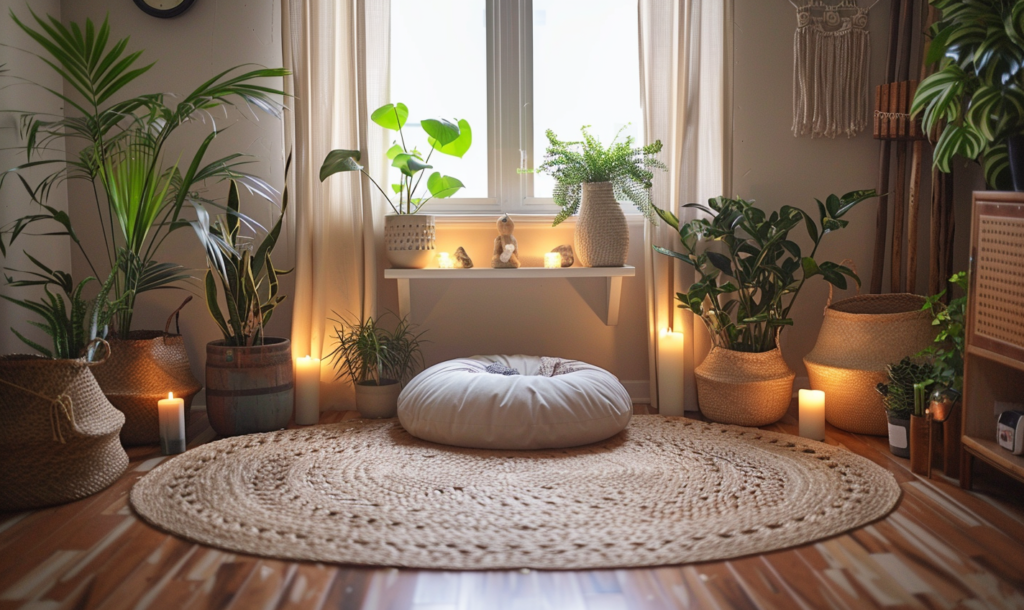
A sacred space is a designated area that is intentionally created and used for spiritual or personal practices such as meditation, prayer, reflection, or rituals. It is a space that is set apart from the rest of the environment, and it is characterized by its capacity to elevate one’s spiritual vibration, offering a sense of peace, presence, and connection.
In the context of work environments, a sacred space can be a physical space, such as a corner of the office, or a mental space that is created through intentional practices. It is a space that is free from distractions, where we can focus our attention and tap into our creative energy.
Benefits of Sacred Spaces in Work Environments
Incorporating sacred spaces into work environments can have numerous benefits for productivity and well-being. Here are some of the benefits:
- Increased focus and creativity: Sacred spaces can help us tap into our creative energy and focus our attention on the task at hand. By setting aside a designated space for work, we can train our minds to associate that space with productivity and flow.
- Reduced stress and anxiety: Sacred spaces can be a sanctuary from the stress and demands of work. By taking a break and spending time in a sacred space, we can recharge our batteries and return to work with renewed energy and focus.
- Improved energy and mood: Sacred spaces can help us cultivate positive energy and improve our mood. By incorporating elements such as natural lighting, plants, and crystals, we can create a space that is uplifting and energizing.
Design Principles for Productivity

When it comes to designing a workspace that promotes productivity and flow, there are several key design principles to keep in mind. By incorporating elements like natural lighting, optimized furniture layout, and carefully chosen colors and textures, we can create a workspace that supports focus, creativity, and well-being.
Incorporating Natural Lighting

One of the most important design elements to consider is natural lighting. Exposure to natural light has been shown to improve mood, enhance productivity, and regulate sleep patterns. When designing a workspace, it’s important to maximize natural light by positioning workstations near windows, using light-reflecting surfaces, and avoiding heavy window treatments that block out light.
Helpful Hint: Consider using light-filtering shades or curtains to control glare and reduce eye strain.
Optimizing Furniture Layout
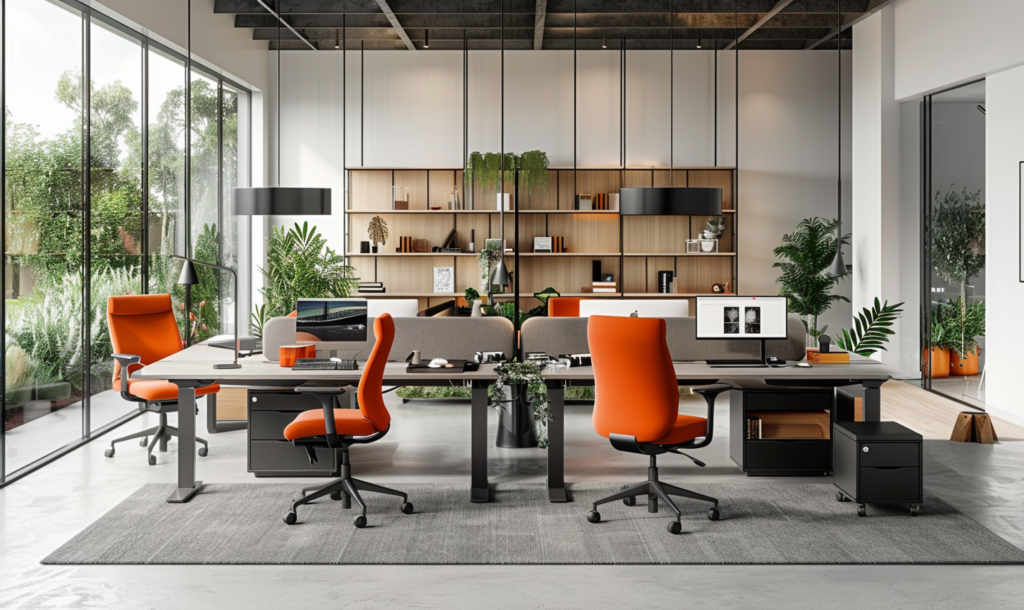
The layout of furniture in a workspace can have a significant impact on productivity and flow. When arranging furniture, it’s important to consider the natural traffic flow of the space, as well as the needs of individual workers. Creating distinct zones for different types of work, such as collaboration vs. solo work, can help to minimize distractions and promote focus.
Choosing Colors and Textures

Colors and textures can also play a role in creating a productive workspace. Certain colors, such as blues and greens, have been shown to promote calm and focus, while others, such as reds and yellows, can be overstimulating. When choosing colors and textures, it’s important to consider the needs of individual workers, as well as the overall aesthetic of the space.
By incorporating these key design principles into our workspace, we can create a productive and inspiring environment that supports focus, creativity, and well-being.
Enhancing Creativity and Focus
When designing a workspace that promotes creativity and focus, it’s important to consider the elements that can help stimulate the mind and increase productivity. Here are a few tips to help you create a space that fosters creativity, focus, and well-being.
Integrating Plants and Greenery

One way to enhance creativity and focus is by incorporating plants and greenery into your workspace. Plants not only improve air quality but also help reduce stress and increase focus. Some great options include succulents, ferns, and snake plants. Consider placing them on your desk or hanging them from the ceiling to add a touch of nature to your workspace.
Utilizing Crystals for Energy
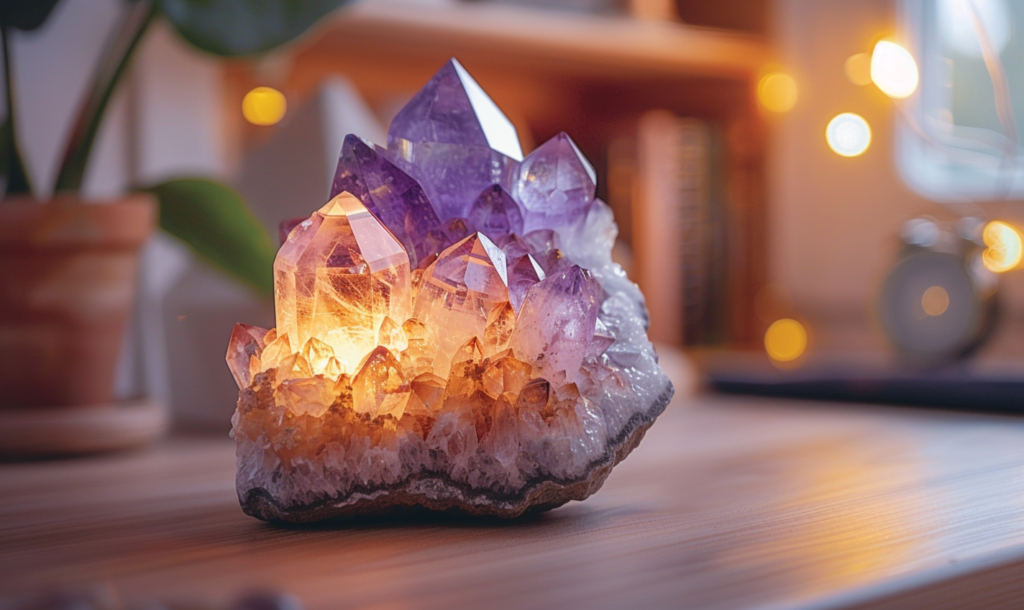
Another way to enhance creativity and focus is by utilizing crystals. Crystals are believed to have healing properties and can help promote positive energy flow in your workspace. Some popular options include clear quartz, amethyst, and citrine. Place them on your desk or carry them with you to help promote focus and creativity.
Art and Inspirational Decor

Lastly, consider incorporating art and inspirational decor into your workspace. Art can help stimulate creativity and inspire new ideas, while inspirational decor can help promote positivity and motivation. Hang up your favorite artwork or quotes to create a space that inspires you to do your best work.
By incorporating these elements into your workspace, you can create a sacred space that promotes productivity, creativity, and well-being.
Helpful Hint: Choose decor that resonates with you and reflects your personal style and values.
Energy Clearing Practices

Creating a sacred space for productivity and flow requires not only physical elements but also intentional energy clearing practices. Here are some effective ways to clear negative energy and promote positive energy flow in your workspace.
Smudging and Aromatherapy
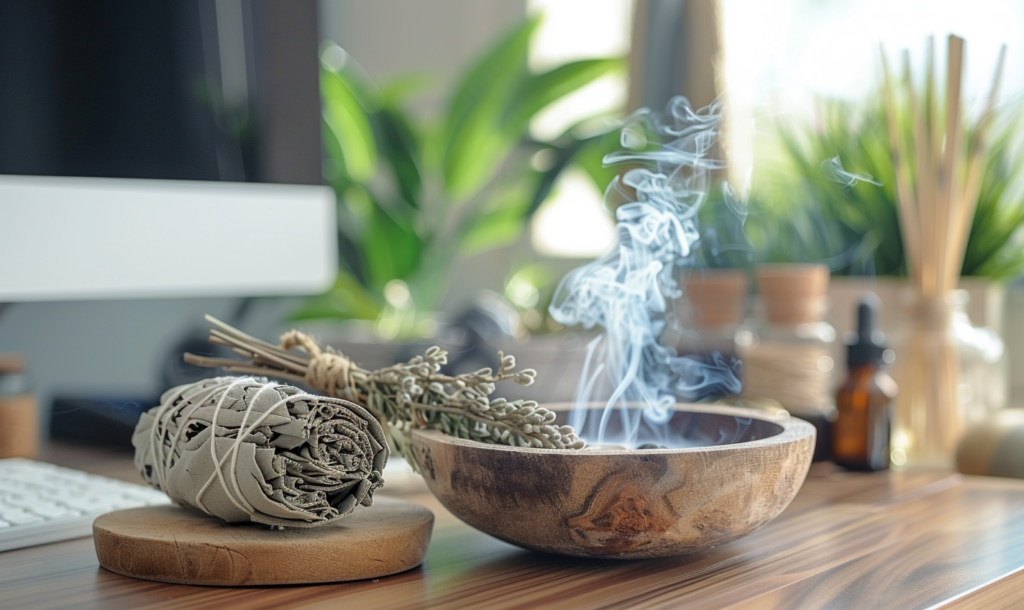
Smudging is the burning of sacred herbs like sage, palo santo, or sweetgrass to cleanse the space of negative energy. The smoke from these herbs is believed to have purifying and healing properties. Aromatherapy, on the other hand, uses essential oils to promote relaxation, focus, and mental clarity. Some essential oils that are great for energy clearing include lavender, peppermint, and lemon.
To incorporate smudging and aromatherapy into your workspace, you can burn sage or palo santo before starting your workday or use a diffuser with your favorite essential oils. You can also create a small altar with crystals and herbs to enhance the energy of your space.
Sound Healing Elements

Sound healing is the use of sound vibrations to promote healing and relaxation. You can incorporate sound healing elements into your workspace by playing music or using singing bowls, chimes, or bells. These instruments produce soothing sounds that can help clear negative energy and promote positive energy flow.
You can also use binaural beats, which are two different sound frequencies played simultaneously to create a third frequency that promotes relaxation and focus. There are many free binaural beats tracks available online that you can use while working.
Meditation and Mindfulness Areas

Meditation and mindfulness practices can help clear your mind and promote mental clarity. Creating a designated meditation or mindfulness area in your workspace can help you stay focused and productive throughout the day.
You can create a small altar with crystals, plants, and other elements that promote relaxation and focus. You can also use a meditation cushion or chair to make your meditation practice more comfortable.
By incorporating these energy clearing practices into your workspace, you can promote positive energy flow and enhance your productivity and well-being.
Maintaining a Dynamic and Flexible Space
Creating a sacred space for work is an ongoing process. We need to be mindful of how we use our space and adapt it to our changing needs. Here are some tips on how to maintain a dynamic and flexible workspace:
Adapting Spaces for Different Tasks
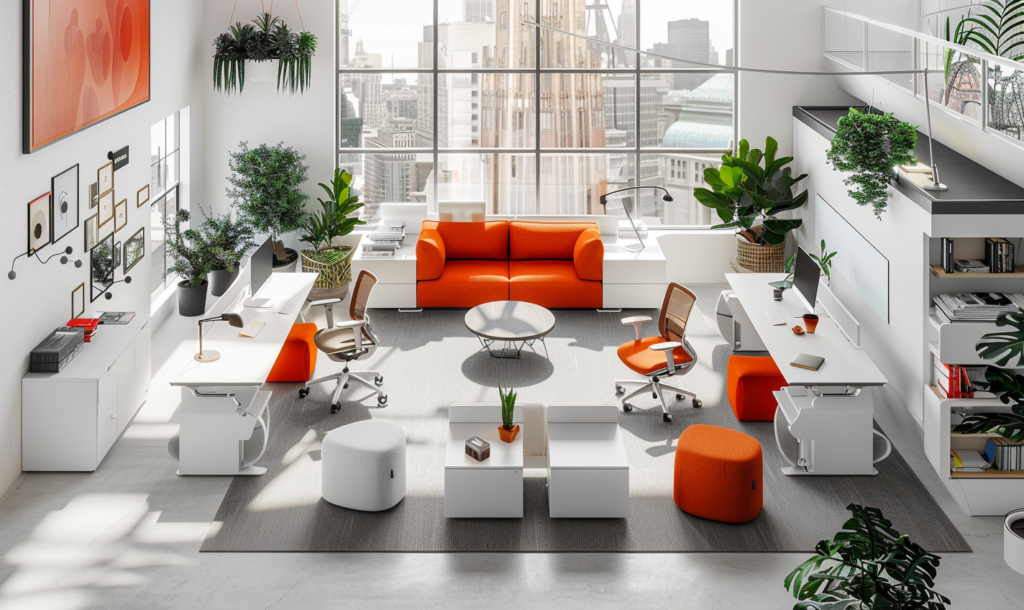
Different tasks require different types of spaces. For example, we may need a quiet, focused space for writing or a collaborative space for brainstorming. We can adapt our space by using movable furniture, such as bookshelves on wheels or modular desks, to create different zones.
Another way to adapt our space is by using dividers, such as screens or curtains, to create visual and acoustic privacy. We can also use lighting to create different moods and atmospheres. For example, we can use warm, dim lighting for relaxation and cooler, brighter lighting for focus and productivity.
Helpful Hint: Consider using a standing desk or a balance board
to add movement and variety to your workday.
Incorporating Movement and Break Areas
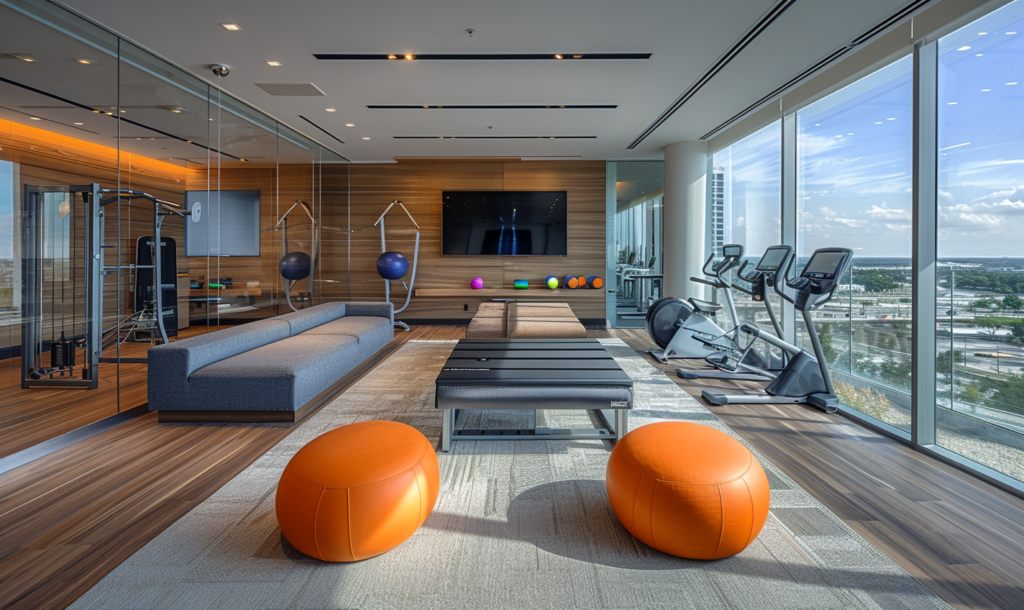
Sitting for long periods of time can be detrimental to our health and productivity. Incorporating movement and break areas into our workspace can help us stay energized and focused.
We can create a designated area for stretching or yoga, or we can use a standing desk or a balance board to add movement to our workday. We can also create a break area with comfortable seating, plants, and natural lighting to help us recharge and refresh.
By adapting our space to our changing needs and incorporating movement and break areas, we can create a dynamic and flexible workspace that promotes productivity, creativity, and well-being.
Creating Sacred Spaces for Productivity and Flow
Personalization and Ownership
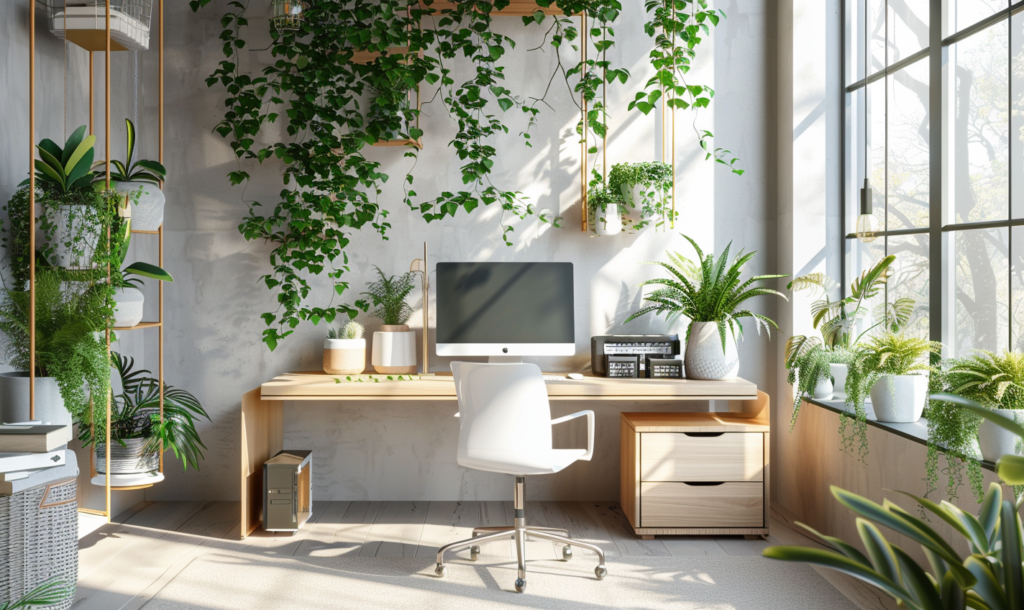
When it comes to designing a workspace that promotes focus, creativity, and well-being, personalization and ownership are key. By customizing the workspace and involving personal rituals, we can create a space that is uniquely ours and inspires us to do our best work.
Customizing the Workspace
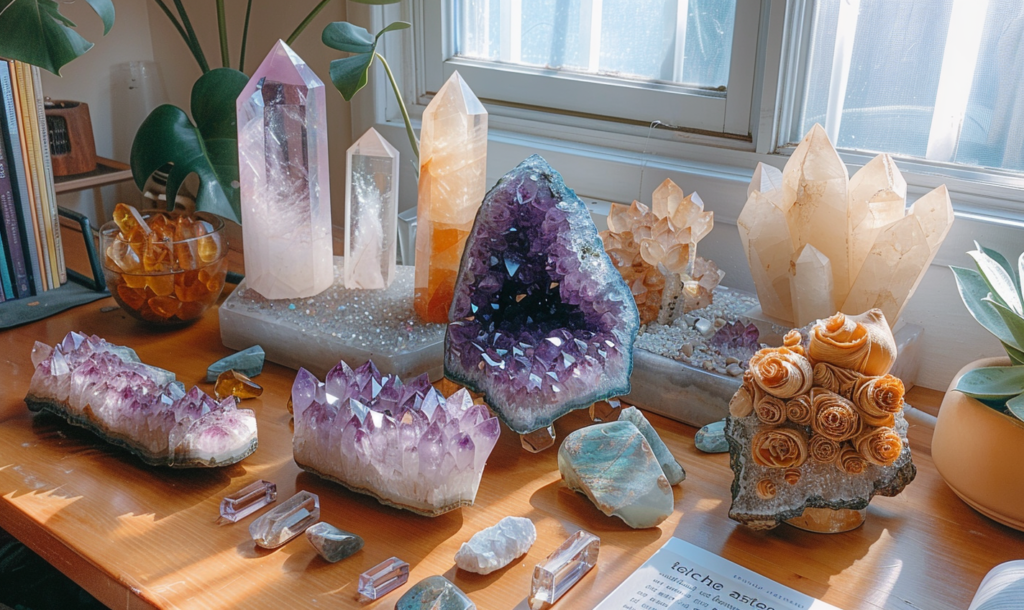
Customizing the workspace means making it our own by incorporating elements that reflect our personality and style. This can be achieved through the use of color, decor, and furniture. For example, if we love bright colors, we can incorporate them into the workspace through the use of colorful desk accessories or wall art. If we prefer a minimalist style, we can keep the workspace clutter-free and use neutral colors.
Another way to customize the workspace is by incorporating elements that promote well-being and productivity. Natural lighting, for example, can improve mood and energy levels, while plants can purify the air and reduce stress. We can also incorporate crystals, which are believed to have healing properties and can help us stay focused and grounded.
Involving Personal Rituals

Involving personal rituals in our workspace can help us establish a sense of ownership and create a sacred space that inspires us to do our best work. This can be achieved through the use of affirmations, intention setting, and energy clearing practices.
Affirmations are positive statements that we repeat to ourselves to promote self-belief and confidence. By placing affirmations around the workspace, we can create a positive and empowering environment that supports our goals.
Intention setting involves setting specific goals and intentions for the workday or week. By setting intentions, we can focus our energy and attention on achieving our goals and staying motivated throughout the day.
Energy clearing practices, such as burning sage or using essential oils, can help us clear negative energy and promote a sense of calm and relaxation. These practices can be especially helpful when we’re feeling stressed or overwhelmed.
Frequently Asked Questions

What are effective ways to incorporate natural lighting in a home office for enhanced productivity?
Natural lighting is a key element in creating a workspace that promotes productivity and well-being. When designing a home office, consider placing your desk near a window to take advantage of natural light. If your workspace lacks natural light, consider investing in full-spectrum light bulbs that mimic natural light.
How do plants contribute to a creative and focused workspace environment?
Plants not only add aesthetic appeal to a workspace, but they also have numerous benefits for productivity and well-being. Plants help to purify the air and reduce stress levels, leading to a more focused and creative workspace. Consider adding plants such as snake plants, peace lilies, or spider plants to your workspace.
Can crystals really influence the energy of a workspace, and if so, how should they be used?
While there is no scientific evidence to support the use of crystals in improving productivity or focus, many people believe in their power to influence energy. If you choose to incorporate crystals into your workspace, choose ones that align with your intentions. For example, clear quartz is believed to enhance focus and clarity, while amethyst is believed to promote creativity and intuition.
What are some intentional energy clearing practices that can improve work flow in my office space?
Intentional energy clearing practices can help to remove negative energy and promote positive flow in your workspace. Consider using practices such as smudging with sage or palo santo, burning candles or incense, or using essential oils.
How does the design of a workspace impact mental well-being and focus?
The design of a workspace can have a significant impact on mental well-being and focus. A cluttered or disorganized workspace can lead to stress and distraction, while a well-designed workspace can promote calm and focus. Consider incorporating elements such as storage solutions, ergonomic furniture, and calming colors to create a space that promotes well-being and focus.
Helpful Hint: Take a 5-10 minute break every hour to stretch, move, and recharge.
Helpful Hint: When customizing the workspace, it’s important to strike a balance between personalization and functionality. We want the space to reflect our personality, but we also want it to be conducive to work.
What tips can you offer for setting up a workspace that fosters well-being and creativity?
In addition to incorporating natural lighting, plants, crystals, and intentional energy clearing practices, there are several other tips for setting up a workspace that fosters well-being and creativity. Consider incorporating personal touches such as artwork or photos, playing calming music or white noise, and taking breaks to stretch or meditate throughout the day.
